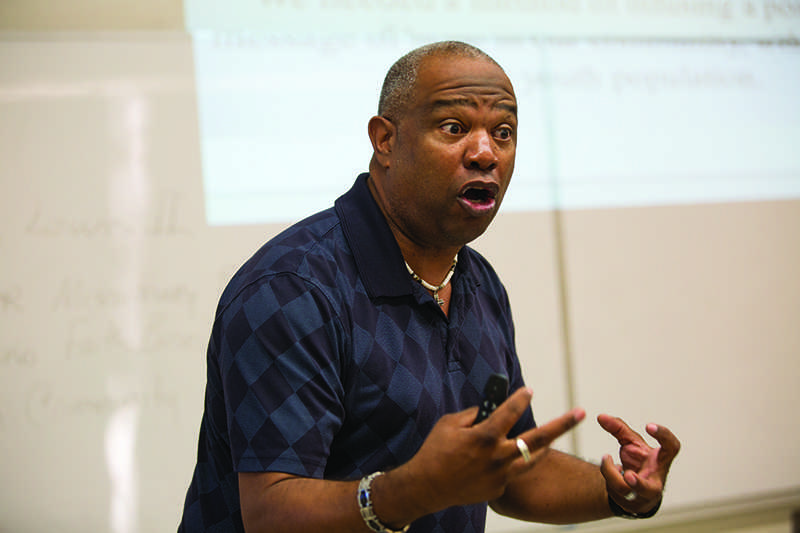
Eleven days after the Aug. 9 death of black teen Michael Brown, protesters marched down one of the streets near the Ferguson, Missouri, apartment complex where he was killed — including several Fresno pastors.
Brown’s death at the hands of white Ferguson police officer Darren Wilson attracted immediate national attention. But on Aug. 20, the 11th day of the protests, the scene in Ferguson was more subdued than the initial days, when reports described rowdy protesters clashing with police armed with riot gear and tear. Police agencies were in “wait-and-react” mode.
Booker T. Lewis, a pastor at Fresno’s Rising Star Missionary Baptist Church, was there to witness the protests.
Through People Improving Communities through Organizing (PICO), a national network of clergymen that called for members to come to a divided Ferguson to help maintain peaceful protesting, Lewis flew from Fresno to Ferguson to go to a church he’d never been to.
There, he saw familiar faces — clergy friends from Philadelphia, New York and Sacramento who came for the same cause of keeping the night’s protests orderly.
Lewis, talking to a peace and conflict studies class Thursday night, called Brown’s death an “execution.”
“It’s still true that a person’s attitude toward another is often defined by skin color and racial definition,” Lewis said. “We develop a prejudged perception of a person, and we already have some idea about what we expect based on how they look.”
Lewis was at the St. Mark Baptist Church, one of the headquarters for protesters, the second Wednesday after Brown’s death as protest organizers went over the game plan for the night.
Protesters were asked by organizers, “Are you prepared to go to jail tonight if you have to? Are you prepared to get sprayed tear gas?”
One protester, in particular, was overenthusiastic — the same man who, come marching time, got in police officers’ faces, wielding a candle and taunting them by telling them not to shoot.
That wasn’t the point of the protest, Lewis said.
“The goal is to assert your human rights,” he said. “The goal is to do it peacefully. But the goal is not to be antagonistic. The protest needs to stay nonviolent.”
Police had rules set for marching, Lewis said. Protesters couldn’t stand in place; they had to keep walking. No marching on the street; it had to be done on the sidewalks. There were designated rest areas scattered throughout the protest march. Lewis and his group of about 100 had to park at a distant shopping center and walk to the protest grounds. The streets there were unlit.
Police lined up on one side of the street — media on the other side.
Prior to arriving at Ferguson, Lewis saw the media reports — protests that escalated with tear gas and rubber bullets. But media covering Ferguson were not telling the full story, Lewis said.
“The media here, they were looking for the loudest, nastiest, the ugliest … they were looking for the worst situation to interview,” he said. “That’s what they were looking for. They really gave a bad reputation of what the protesters were really doing.”
One protester told Lewis she was angry when he asked her what was wrong.
Ferguson was a wake-up call, Lewis said.
“It’s not a knock on our police to say that this very thing can happen [in Fresno]. So it’s better to discuss it now. We’ve had our share of shootings here, and we’ve had our share of questionable shootings here.”
Dr. Sudarshan Kapoor, a Fresno State professor emeritus who hosted Lewis for a class presentation, said, “I think for students to know somebody who has been there, gone there, seen things … The way he shared that brings home the message that he very eloquently presented.
“The message is basically that we still have racism in this country.”




